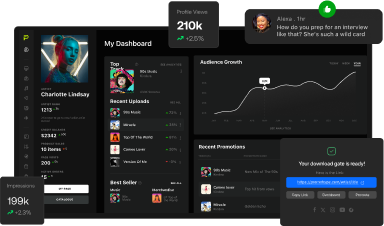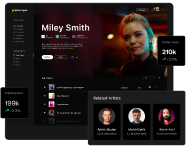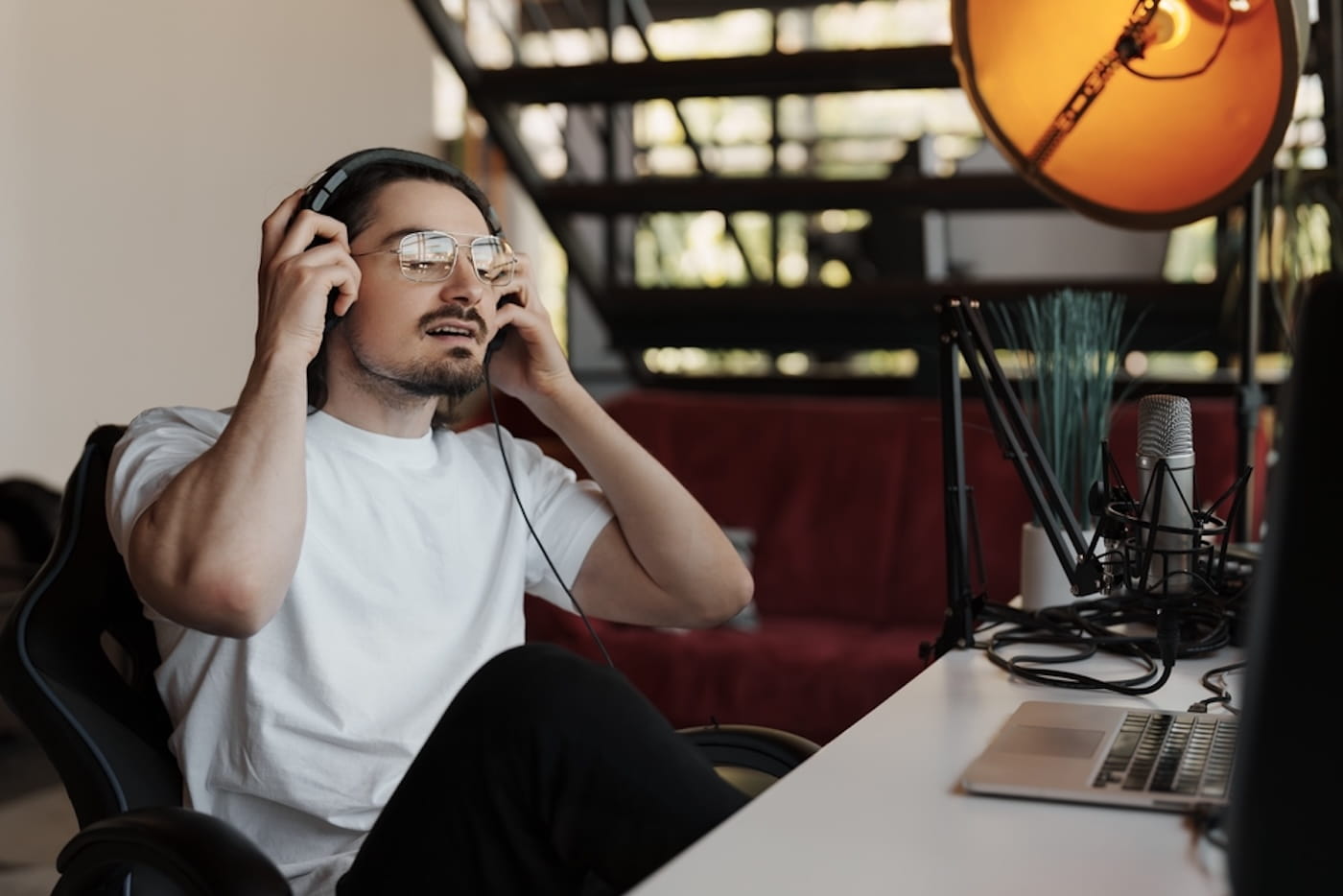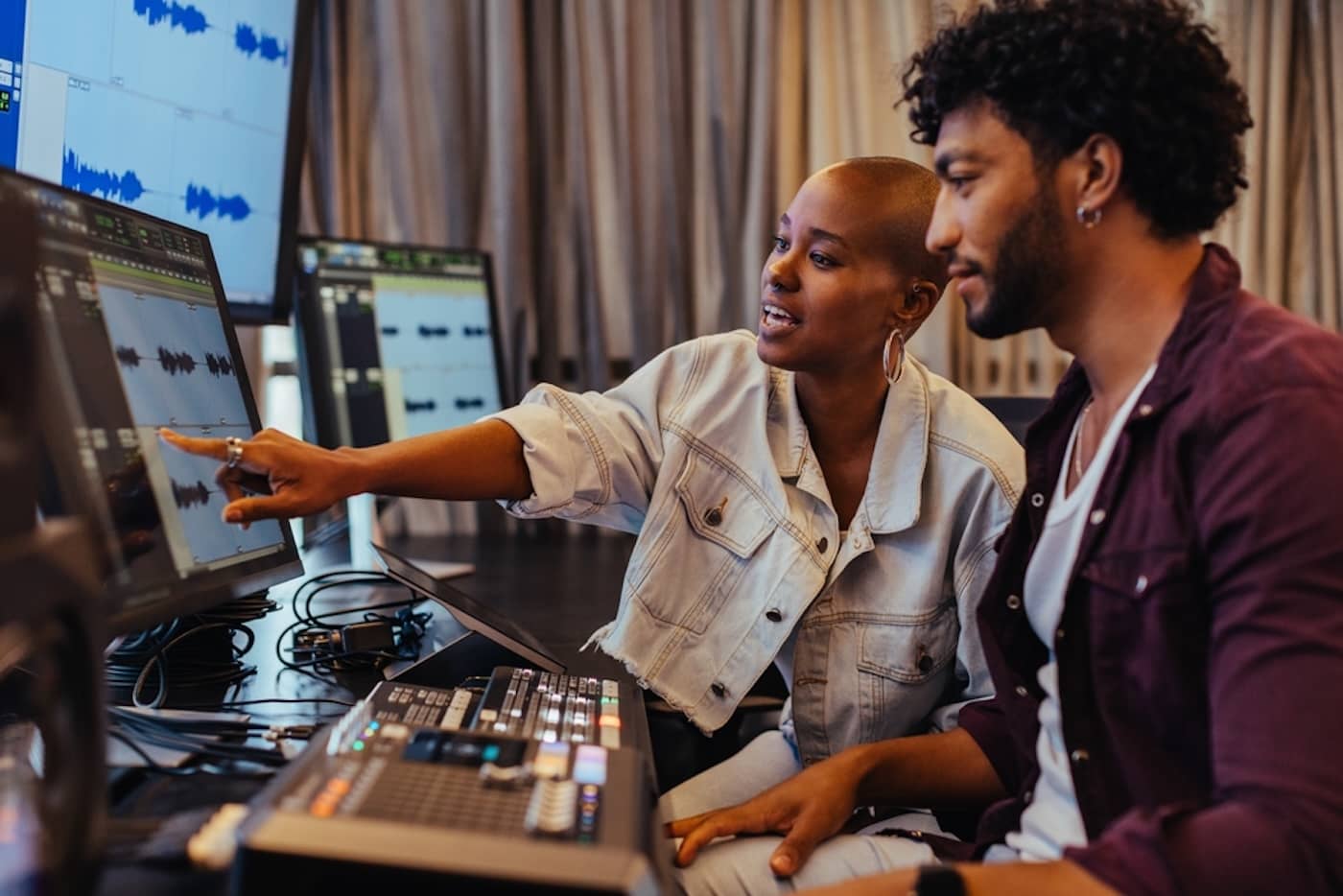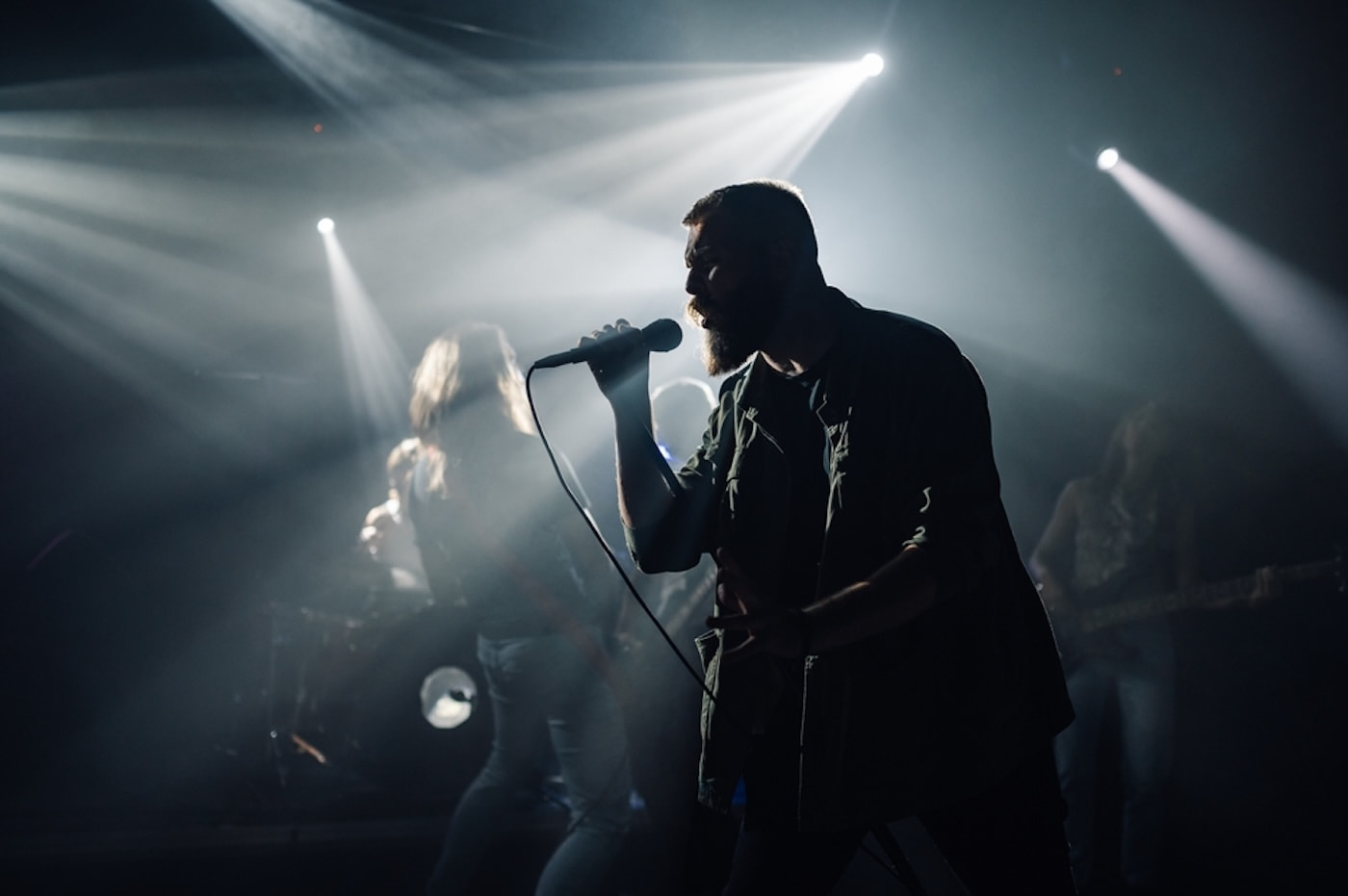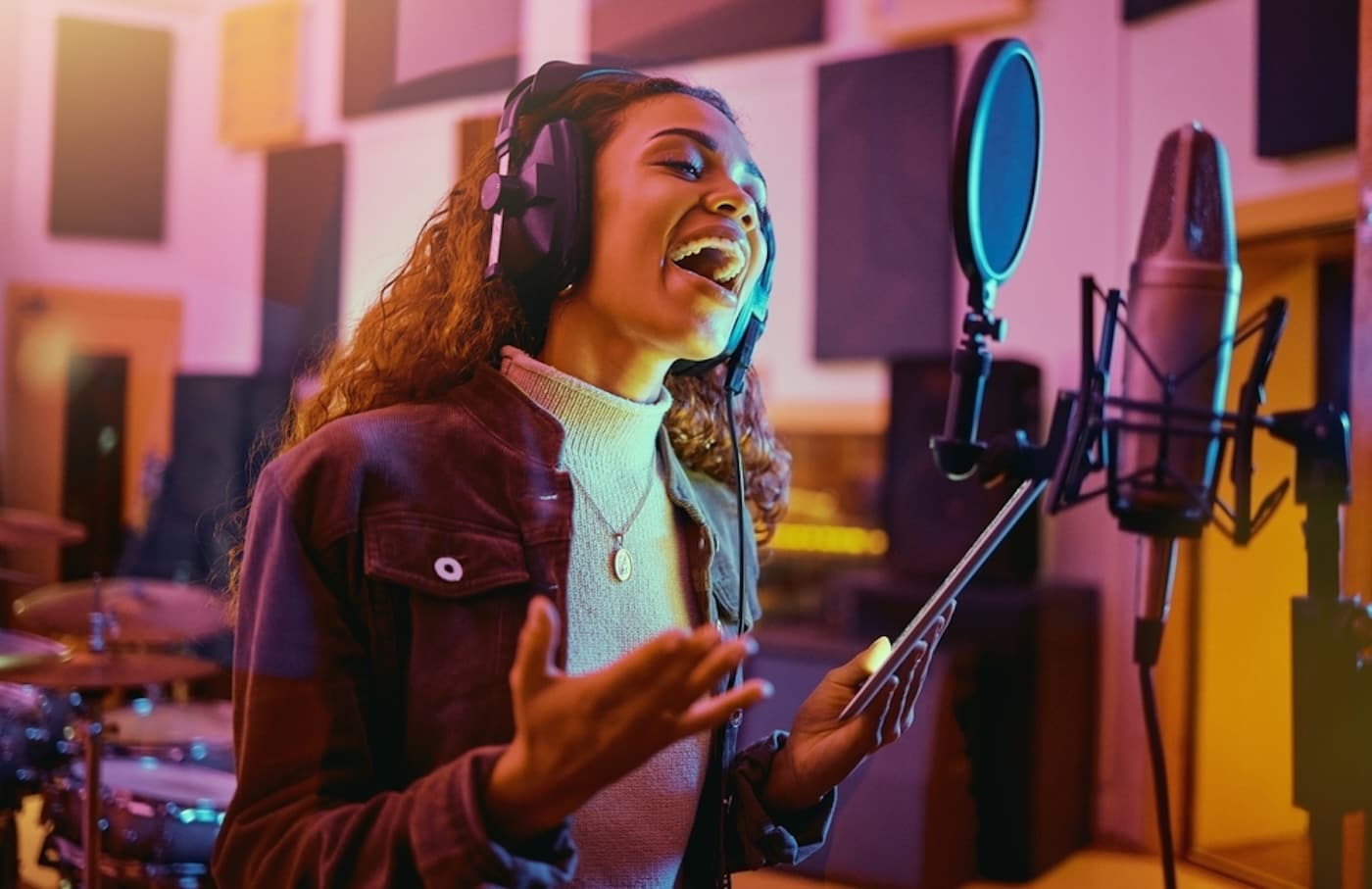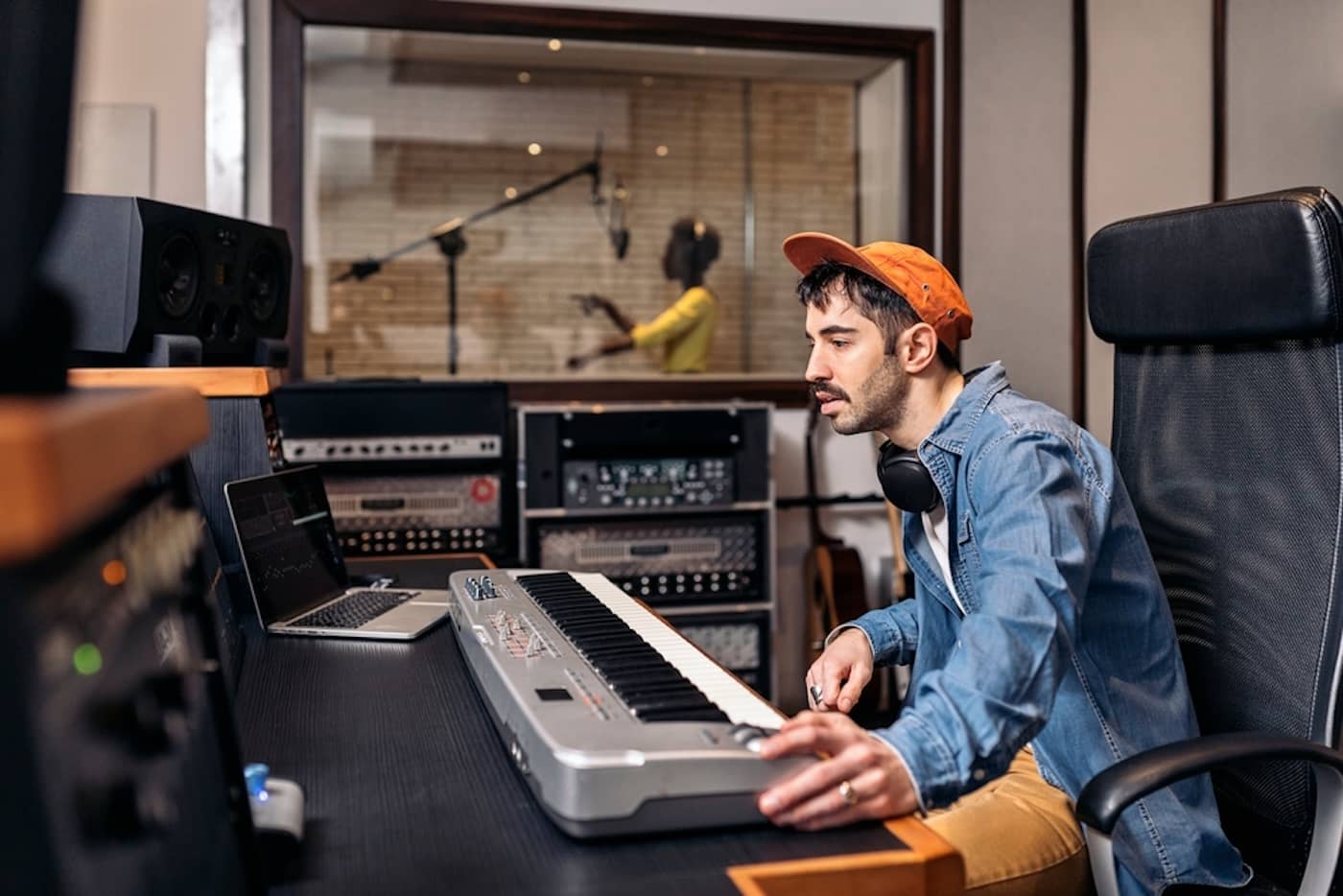
Understanding how music licensing works is essential for independent artists, producers, and venue owners alike.
A proper license ensures that anyone using or performing a song has the legal right to do so, while helping creators earn a consistent income from their work.
This guide breaks down how music licensing operates and the strategies artists can use to generate steady revenue through licensing deals.
Get Early Access
To Promo Hype
What Is A Music License?
A music license is used to grant permission for the use of copyrighted music by businesses for a variety of specific purposes.
There are different types of music licensing available, each dependent on the nature of the performance or use in media.
Artists who license their songs can collect music royalties whenever their work is performed publicly or used in visual media.
To develop these income streams, their work must be registered with the relevant collection management service.
By understanding how music licensing works, artists can build a business empire that draws on multiple royalty streams.
How Do Music Licenses Work?
When approaching music licensing, the first concept to be aware of is the distinction between the licensee and licensor.
“Licensor” refers to the individuals responsible for creating music, which grants them copyright ownership once the tracks are completed.
The licensee then uses these tracks through the appropriate music licenses, depending on how they wish to utilize them.
In some instances, copyrighted music is owned by record labels or music publishers, depending on the artist’s situation.
Successful independent artists often opt for self-representation, avoiding record labels and publishing deals.
This arrangement enables them to retain complete creative control and retain all royalties generated through licensing.
While licensing has remained consistent in the music industry, AI’s impact on music is changing the landscape.
Recommended read: The definitive guide to music marketing.
6 Types Of Music Licenses
Before businesses can play music in a venue or on a public broadcast, they must pay the relevant licensing fees for their purposes.
Here’s a breakdown of the 6 types of music licenses needed to avoid copyright infringement in a range of settings:
1. Sync License
A synchronization license, often abbreviated as a sync license, refers to the use of music in various visual media.
Frequently used by top music producers, a sync license applies to films, commercials, TV shows, and online videos.
Once a sync license has been granted, the songs can be paired with a project’s visuals without any legal repercussions.
2. Mechanical License
Acquiring a mechanical license is frequently used when songs are used on audio-only digital and physical media.
For example, a CD or vinyl record release that incorporates remixes and cover versions will require a mechanical license before release.
Once the work has been produced and released, the original artist can receive mechanical royalties based on sales and streams.
3. Public Performance License
If copyrighted works are performed in public spaces, a public performance license is required to avoid legal action.
This includes the use of music at live concerts, as well as its use on radio broadcasts and primary streaming services.
Public performance licenses are also necessary for public spaces, such as retail stores and coffee shops, when background music is used.
There are some exemptions, including face-to-face teaching and the use of music at non-profit institutions.
Independent music producers and songwriters can then earn performance royalties, provided they’ve registered their work.
Related reading: Mechanical royalties vs. performance royalties.
4. Master Recording License
Some media-based projects purchase a master license, which allows for the specific use of a master recording.
A master license is typically negotiated between the copyright holder and the media outlet through a formal, upfront agreement.
The master recording also covers the specific production, including the mixing and mastering of a particular song.
5. Print License
If a project or publisher wishes to reproduce sheet music or printed lyrics of copyrighted music, a print license is required.
Often used by publishers when distributing sheet music, the print license is less commonly used and typically applies to educational purposes.
A print license is also required when creating a new arrangement of an existing composition with different vocals or instrumentation.
6. Blanket License
The final type of music licensing is the blanket license, which provides access to an extensive music library for a specific venue or purpose.
Commonly used by clubs, bars, and restaurants, a blanket license simplifies the application process when granting permission.
It covers multiple copyright holders under a single legal agreement, covering performances from DJs and background music.
Get Early Access
To Promo Hype
Music License Vs. Copyright: What’s The Difference?
Music licensing and copyrighted music are intimately related, with the latter informing how the former is applied.
Copyright refers to the legal protection afforded to original musical works and sound recordings, including lyrics and song structure.
These rights can be assigned to the songwriters, music publishers, or record labels, and are sometimes split between these parties.
Composition copyright typically goes to the songwriters, while the sound recording copyright belongs to the artist or label.
By paying a licensing fee, organizations are granted the right to reproduce this music in accordance with the terms of the licensing agreement.
Who Needs A Music License?
The nature of music licensing and who is required to apply for one is based on several factors and obligations.
Let’s explore the various types of businesses and organizations that require music licensing to operate without legal issues.
Live Performances In Specific Business Types
All businesses that perform live music in their establishments are required to pay a licensing fee for the privilege.
This includes establishments such as gyms, bars, restaurants, retail stores, and hospitality venues like hotels.
In the United States, such business types are expected to purchase a license through the American Society of Composers, Authors, and Publishers (ASCAP).
Outside the US, other performing rights organizations are available, such as the Performing Rights Society in the United Kingdom.
Different licenses are available based on the type of establishment, with performing rights organizations delivering payments to artists.
Online & Broadcast Music
Online content creators, broadcasters, and other visual media creators are expected to acquire a licensing fee when using copyrighted music.
These fees also apply to other forms of broadcasting, such as radio stations, podcasts, and television programs.
Such fees apply whether the tracks are being used for intros and outros, or as background music and theme songs.
Likewise, filmmakers and other professional video producers are required to obtain a license for any music used in their creative works.
If you’re performing licensed music in a public setting, such as covering a song in a band, you may be required to obtain a license.
However, the venue’s blanket license may cover this for you, so verify with the owner before hosting an event.
Related reading: How to submit music to radio stations.
Public Education Institutions
Educational institutions, such as high schools and colleges, are also expected to pay for music licensing when using copyrighted songs.
As with businesses, these institutions can purchase their license through performance rights organizations like ASCAP and BMI.
Once the licensing fee has been paid, schools can legally play music in common rooms and other shared areas on site.
Other settings in which music licensing is used in public education settings include:
- Special school events, including school dances and proms, pep rallies, and student assemblies.
- Using copyrighted songs in school theatrical productions, plays, recitals, and dances.
- Streaming music on the school’s radio station, virtual events, or online podcasts.
They may also acquire a print licensing fee, which can be used when reproducing sheet music to be used in lessons.
It’s essential to be aware that there are exemptions under the U.S. Copyright Act, including the use of music for face-to-face teaching.
Schools can also consider alternatives that don’t require a licensing fee, such as royalty-free and public domain music.
Music Licensing Alternatives
Not everyone has the means to pay for a music licensing fee or requires one for their specific content creation workflow.
Several popular alternatives can be used to build a library of high-quality recorded music for various projects.
Here’s an overview of these music licensing alternatives to consider using:
1. Production Music Libraries
Professional content creators who prefer to select specific tracks for their projects often use dedicated production music libraries.
These libraries contain thousands of songs across the most popular music genres, handling all licensing details in advance.
Platforms like Audio Network and Cinephonix license music for all visual media, covering music videos, TV, advertising, and movies.
Some libraries grant exclusive rights to certain composers, while others have non-exclusive arrangements with artists.
2. Royalty-Free Music Libraries
Royalty-free music refers to tracks that have been pre-licensed for specific use, typically accessed on platforms with one-time purchases or subscriptions.
These platforms handle payment of royalties to the artists or PROs, making them ideal for budget-conscious projects.
Epidemic Sound, Artlist.io, and PremiumBeat are some of the larger stock music services that offer millions of tracks.
They’re an affordable way to use music without any legal issues, covering songs from mainstream acts and independent artists.
3. Public Domain Music
Once a work of music has reached a certain lifespan, it enters the public domain and can be used freely without permission.
In the United States, public domain music covers most works published before 1929, once the original copyright has expired.
Some artists and producers voluntarily dedicate some or all of their works to the public domain by using a Creative Commons Zero license.
This serves as a waiver, allowing others to access, share, modify, or use the music commercially worldwide.
4. Creative Commons Music
The concept of the Creative Commons licensing system warrants further explanation, as there are several distinctions to be aware of.
This includes the two primary applications, CC-BY and CC-NC, which refer to the different ways Creative Commons licenses can be used for music.
For CC-BY, the tracks can be redistributed and adapted for all types of use, including commercial use, provided the songwriters are credited.
On the other hand, CC-NC specifies non-commercial use only, making it unsuitable for any project that generates a profit.
Creative Commons music can be found on the Free Music Archive and the YouTube Audio Library, and also includes sound effects.
5. Direct Artist Collaborations
Another popular approach to music acquisition without licensing fees is through direct collaboration with the artists.
Businesses and broadcasters sometimes negotiate a specific license for a project with the artist, tailored to a particular project.
This agreement outlines the specific use of the music and may also involve the commissioning of custom tracks.
With new options like the Roblox and Netflix creator licensing platform emerging, the possibilities for music acquisition are expanding.
Read more: How to trademark a band name.
How To Earn Money From Licensing
If you’re an independent singer-songwriter or music producer, licensing can be an excellent source of revenue.
Here are some ways to capitalize on music licensing and make money as a music producer:
- Submit tracks to libraries: If you have a large body of high-quality music, you can submit it directly to music libraries to earn money. Ensure you’ve verified the submission requirements to meet the expectations of a particular music library.
- Register with a performing rights organization: Registration with a PRO, such as ASCAP and BMI, is essential for earning income when your work is used.
- Promote your music: Taking the time to promote your music will increase your chances of landing a lucrative licensing deal. You can use your artist website and social media pages to generate interest in new releases and build your reputation.
- Utilize music distribution services: You can earn royalties through streaming platforms, with music distribution services streamlining the process.
You can also approach music publishing companies, landing a deal that brings your work to a broader audience through licensing deals.
Summary
Understanding how music licensing works is crucial for independent artists seeking to optimize their revenue streams.
By referencing this guide, you can push your music to the best platforms and earn money when it’s used in various projects.
It’s a popular way for every copyright owner to ensure their creative works generate a consistent stream of income.
Get Early Access
To Promo Hype
Join Promo Hype
